How to Buy a Barcode Verifier in 2016
Barcode verification is famous for being complex. Some of the newer verifiers have done a good job in making it easier and we have tried to make choosing one for your needs easier as well. This article is intended as a guide to help simplify that decision for you and your company. We bring out some of the considerations and features that are important today so you can identify your needs and then do some shopping. This covers full ISO verifiers only. For information regarding on-line or partial ISO verifiers, please contact us.
If you are in one of the many businesses that are already familiar with barcode verification and use it in your practices and processes, then you might skip over the “Why you should use one and How it works”. Otherwise, if you need a refresher you can go to the end for the “Why and How”
Buying Guide
Picking the right tool for the job

Which verifier is right for you? Well, it depends. Here are a few important questions.
What type of barcodes do you want to verify? Does your company print Linear barcodes, 2D barcodes or both? There is a definite move toward 2D barcodes that can carry more information. You may only print linear codes today but tomorrow you (probably?) will have to print 2D barcodes as well. In addition, there is also a move toward serialization and traceability that is increasing the installations of Direct Parts Marking 2D barcodes. These are printed with lasers, inkjets or dot peen directly on the product surface. Buy what you need but look forward a bit so you don’t have to replace equipment in a few months.
| Barcode Types |
Linear |
2D and linear |
DPM |
All |
What size is the barcode you need to verify? Width and height for barcodes vary quite a bit but this is important because it will determine what Field of View (FOV) you require on the verifier you purchase. Linear barcodes typically require the largest FOV, 6.5” for GS1. It would be unusual for a requirement larger than that but if you have one just let us know. You might be surprised how small an area some verifiers check. They may have been designed for small 2D barcodes and will not be able to check some of the larger linear codes you make. To get a wider FOV, they require you to purchase extra camera modules. The extra expense comes with extra complexity and work for the user. Shop for a verifier that does all of your verification requirements so you do not have to purchase extra modules or a second verifier with a wider FOV later. Camera based verifiers that have an adjustable focus allow you to adjust the field of view. You can close in on smaller barcodes and back away to check the larger ones. This has the added benefit of getting the camera resolution working most effectively for you regardless of barcode size. Most companies will be producing (and eventually verifiying) both large linear and small 2D barcodes.
| Field of View |
Small –
2D and UPC
1.75” |
Medium –
Big UPC
4” |
Larger –
6.5” plus quiet Zones |
Infinite –
Camera based with focus and FOV adjustable |
Where are you going to use the verifier to verify barcode? To meet your customer needs for barcode quality, verification can no longer be some little-known function performed in a laboratory somewhere. You will be checking more frequently and taking the verifier to the processes that make your products or perhaps to a customer warehouse. There are verifiers that are light and easy to use portably, unencumbered by dead batteries or the need for a power cord. This could be a significant consideration as you expand and manage your quality.
| Portability |
Not portable |
> |
> |
Small and light, rugged, no power plug required |
Are you in an industry group that has barcode standards that you must follow? Retail, Food, Healthcare, Manufacturing (auto, etc.), DoD, Electronics all have added requirements beyond barcode print quality. Almost all segments are increasing their use of and reliance on barcode for new industry efforts toward reduced costs, improved productivity, traceability, etc. GS1 has a comprehensive standardized communication layer that uses a barcode as a multiple field data record defining the product and its characteristics.
This is an important consideration because the industry standards are extensive, can be complex, will lead to error if not checked and compliance is expected. If the barcode content is not formatted correctly, the customer cannot use it. Kaput! The interpretation of the barcode content relative to the application standards is probably the second most important consideration for a verifier buyer. Your current verifier most likely does little checking in this area but most of the newer verifiers do.
| Industry standards |
Not available |
Not included |
> |
Available and included |
Is the barcode printed on a label, on packaging or on the product itself? Is the barcoded surface flat? Is the package sealed or overwrapped after? When a barcode is printed on a curved package it cannot be verified using a flat-bed type (fixed focus, contact) verifier. The same is true of packaging with folded panels. One of the panels contains the barcode. If you check the packaging unfolded it may pass but once you fold it to enclose the product you may not have adequate quiet zones as an example. It is always best to verify your products barcode just as your customer’s scanner would see it.
Verifying the package as it appears to the customer’s scanner may reveal and help eliminate a lot of problems. This is referred to as In Situ inspection
| In Situ inspection? |
No – flat bed scanning |
> |
> |
Yes – non contact scanning |
Are you in a regulated industry like healthcare or make products with risks if they cannot be scanned? If so you will probably require record keeping. Regulatory agencies expect to see detailed records as proof of your inspection practice. Anything less than detailed dated records are considered to be ‘just a rumor’. If you have multiple inspection locations or printers, then you may want all inspection records kept in a central database. That will facilitate GRC applications.
Record keeping of inspection details is important to those responsible for continuous improvement of their processes and as an aid in purchasing new printing systems and supplies that can comply. Engineers refer to this as Statistical Process Control (SPC). It may reveal a way to save a lot of capital.
| Records |
No, by hand or just printed paper tape |
> |
> |
Full database with user defined fields |
Are you using standard applications for email, spreadsheets, etc.? You will find it easier and more effective to send out the detailed inspection information directly from the verification software rather than having to take a picture of the barcode then scan in the verification report. Also, if the database containing the inspections can be looked at and manipulated through common applications such as a word processor or spreadsheet application, the data is more useful and therefore more valuable.
| Integration – Emailing and spreadsheet analysis |
no |
> |
> |
Embedded email client and an open database |
Do you collaborate with others to solve problems fast and effectively? It is the best way to get things done and that is especially true with barcode verification. The addition of detailed parameter reports, scan profiles and especially images of the barcode area are key to getting everyone involved on the same page quickly and working toward a solution.
| Collaboration tools |
No – manual |
> |
> |
Full image of barcode area and detailed report |
Do you feel that you may need upgrades in the future? Perhaps today you are only using linear barcodes but you want to have the door open to using 2D barcodes in the future. Will your verifier be able to be upgraded when you need the extra capability?
What about training and support? Very important. Like many, you may have been printing barcodes for decades and you now find a need to build up your company’s competency in barcode verification. No matter how good a verifier system is, it is always good to be able to get help from a knowledgeable person who has your back.
| Training and support |
No |
> |
> |
Yes |
Could this become the company standard? You might look at a verifier you are considering and ask ‘Could it become the company standard?’ , ‘Will this model do 90-95% of everything we do?’. Finding a company standard provides big long term and short term advantages such as training and support as well as reducing initial costs and operating costs.
| Company Standard |
No |
> |
> |
Yes |
And of course, cost! The important thing is to identify what you really need and then do your shopping. You can expect to pay $3000 to $14,000 for a barcode verifier, with most falling into the $4000-$7000 price range with varying capabilities. There are certainly discounts available. Remember what they say, ‘It is bad to pay too much but may be far worse to pay too little.’
| Cost |
> |
> |
> |
Suits your needs and is a Great value |
Summary
Well, I hope you can see how verification fits into your business and how some of the considerations above could be important in your decision making. With the added difficulty of complying with complicated industry standards and the need to maintain records for regulators as well as the new barcode types, it is a good time to full review. All you have to do now is to prioritize what is important for you and do a bit of research to find the best candidates. Some of the comparisons may have already been done for you. If you would like you may contact us via mail@ais-co.com or 614 431 3300
|
Verifier Feature |
Possibilities
> Good > Better > Best |
| Types of barcodes it Verifies .. |
Linear |
And 2d |
DPM |
All |
| Field of View |
Small |
Medium |
Larger |
Large and adjustable |
| Portability |
Not portable |
> |
> |
Small and light, rugged, no power plug required |
| Industry standards |
Not available |
Not included |
> |
Available and included |
| In situ inspection? |
No – flat bed scanning |
> |
> |
Yes – non contact scanning |
| Records |
No, difficult or just paper |
> |
> |
Full database with user defined fields |
| integration – Emailing and spreadsheet analysis |
no |
> |
> |
Embedded email client and compatible database |
| Collaboration tools |
No – manual |
> |
> |
Full image of barcode area and detailed report |
| Upgradeable |
No |
> |
> |
Yes |
| Training and support |
No |
> |
> |
Yes |
| Company Standard |
No |
> |
> |
Yes |
| Cost |
> |
> |
> |
Great value |
The following is reference materials.
The Why and how of barcode verification
Why should I buy one? The answer to that question will help you decide on what type to purchase. Barcode print quality verifiers were first designed in the 1990’s to implement ISO standards for inspection and grading. It is an inspection method used to predict how well your barcodes can scan.
The early versions were a bit difficult to use and were relegated to the techie tool chest. Through the years, barcode became the key to improved productivity and data collection, the language of business. With the gradual maturing and growth of barcode standards from GS1, DoD, AIAG and other associations, barcode print quality verification became mandatory and verifiers became easier to use and equipped with more features to manage compliance. Today, the only reason to not verify is if you do not need the barcode to be read! Verification is the only way to determine if and how well your barcodes can be read by others. Some will make the mistake of assuming that if they can scan it with their scanner then their customers scanner can as well. Not true. See Scanning vs. Verification below.
Today it is very important to get barcodes ‘right’ because barcode is relied on as a primary method for accurate information. It is very good so everyone expects that barcodes can be scanned and they are building infrastructure on that assumption. An automated warehouse conveyor system with an unattended scanner used to receive your product; a robotic or manual picker scanning your product to select it for an outgoing order; a shipper using a hand held to scan labels and create a manifest; a nurse scanning a pharmaceutical barcode with a cell phone to insure it is right before it is given to a patient; all have an expectation that the barcode can be easily read and that the data it contains is correct. To see how well your company fits into your customers’ future take a look at verification grades.
ANSI Grade (ISO)
|
Significance
|
Comment
|
| A (3.5 or better) |
This should scan on the first pass almost instantaneously. |
The best place to be. You have room for common variation due to production or handling. |
| B (2.5 – 3.5) |
Will most likely read after 1 or 2 scans |
Minimum for most heavily automated manufacturers. Recommended as a target grade for automated conveyor scanning or robotics. |
| C (1.5 – 2.5) |
The minimum quality usually specified – may take a few scans to get a read |
Minimum for most standards organizations such as GS1, DoD or AIAG |
| D (0.5 – 1.5) |
Because of low contrast, ITF-14 bar codes printed on to fiberboard are allowed a D Grade |
May cause difficulty with some scanning hardware. Some may think it is a ‘scanning problem’ but it really is a ‘printing problem’ |
| F (0 – .5) |
Fail – do not use |
Although it may scan sometimes on some scanners at some distances at some angles in some lighting, it cannot be relied on to scan and should not be used. |
Even if you have not heard any complaints it is possible that you are causing problems for customers and they just haven’t figured it out yet. Most customers spend time and money to improve their supply chain execution. When they find weak links they issue a warning, a chargeback or drop them as a supplier. Customers consider the barcode as part of your product but if they are having difficult with your barcodes, it is almost like you do not have a barcode at all. Do you think it is possible to sell a product without a barcode today? Barcode quality is essential for the efficient distribution of your product and for its correct and safe use. And now for most, it is now mandatory.
How does verification work?
The inspection methods used for barcode verification are contained in the various ISO specifications covering barcode types. ISO/IEC 15426-1 (CEN/ANSI in the USA) covers linear barcodes. This specifies that to verify a barcode you read a narrow path through the bar code and convert reflected light into a Scan Reflectance Profile: bars are represented by troughs and spaces are represented by peaks.

You do this 10 times for each barcode symbol. Barcode verifier software analyzes the information in the scan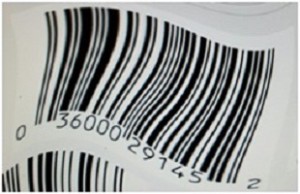 profile to measure and grade parameters that affect the barcodes quality (ability to be scanned). Parameters such as Edge Contrast, Modulation (MOD), Minimum Reflectance (Rmin), Maximum Element Reflectance, Non-Uniformity (ERN), Element Reflectance Non-Uniformity (ERN max), etc. are graded for each of the 10 scan profiles. The lowest parameter grade is the grade for that profile and the average of the 10 profile grades is the overall symbol grade. (Don’t worry, this is all done in the software for you!) The resulting overall grade is predictive analysis of how well that barcode can be scanned. These basic inspection methods have been practiced successfully since the 1990’s. It is a technically sound method and works effectively in practice.
profile to measure and grade parameters that affect the barcodes quality (ability to be scanned). Parameters such as Edge Contrast, Modulation (MOD), Minimum Reflectance (Rmin), Maximum Element Reflectance, Non-Uniformity (ERN), Element Reflectance Non-Uniformity (ERN max), etc. are graded for each of the 10 scan profiles. The lowest parameter grade is the grade for that profile and the average of the 10 profile grades is the overall symbol grade. (Don’t worry, this is all done in the software for you!) The resulting overall grade is predictive analysis of how well that barcode can be scanned. These basic inspection methods have been practiced successfully since the 1990’s. It is a technically sound method and works effectively in practice.
Scanning vs. Verification
There are many different types of barcode readers. Lasers, CCD’s, Pens, contact and non-contact, imagers, line scanners and of course cameras similar to your cell phone camera. Behind each of these readers there is a variety of software used to interpret what the reader has seen. Multiply those two variables then again by the number of different manufacturers and their different models over the years and you will begin to see the scope of scanning today. There are literally thousands of different scanner types and configurations in use. Ideally, you want all of those scanners (customers really) to be able to scan your barcodes.
If you ‘test’ your barcode quality with your scanner, the only thing you will have learned is that your scanner can read it. You will not know if your quality objective has been met, that your customers will find it easy to scan your barcodes and that you are in compliance with standards.
The standards are established, mature, well known and globally supported. Verifying and being in compliance provides the security of knowing that any customer in any location using any scanner will be able to use your barcodes as you intended.
 The first clue the consumer will see is called the UDI (Universal Device Identifier). It will appear on several million healthcare items and can take various forms in barcode or even be in RFID (radio tags) as well.
The first clue the consumer will see is called the UDI (Universal Device Identifier). It will appear on several million healthcare items and can take various forms in barcode or even be in RFID (radio tags) as well.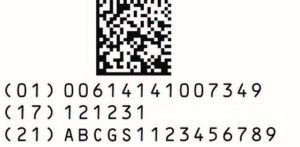 can contain a product ID as well as the specific batch number, serial number, expiration date, etc. for the package. All are important for safe use, tracking and to help in the event of a recall.
can contain a product ID as well as the specific batch number, serial number, expiration date, etc. for the package. All are important for safe use, tracking and to help in the event of a recall.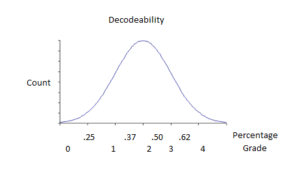
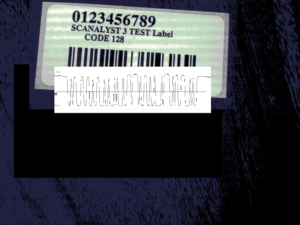

 ance to make a new first impression.
ance to make a new first impression. that people cannot check with their eyes and do not intuitively understand, the barcode and/or the RFID.
that people cannot check with their eyes and do not intuitively understand, the barcode and/or the RFID.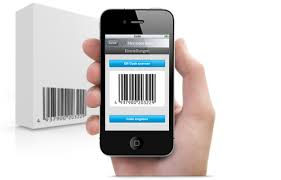 phone is now used as a scanning tool by billions of people around the world. That means your products barcodes and the associated data are readily available to a whole new, very large, group of people. As you know, when you see a barcode, you expect to be able to scan it. If you can’t scan it, you know something is wrong and you will get suspicious. Counterfeit or ? You will need good print quality to let them scan it at all and need good content and format to provide them with the information they may be looking for.
phone is now used as a scanning tool by billions of people around the world. That means your products barcodes and the associated data are readily available to a whole new, very large, group of people. As you know, when you see a barcode, you expect to be able to scan it. If you can’t scan it, you know something is wrong and you will get suspicious. Counterfeit or ? You will need good print quality to let them scan it at all and need good content and format to provide them with the information they may be looking for.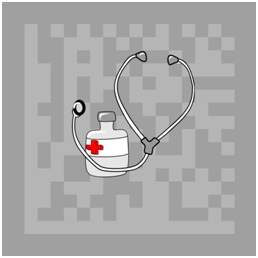


 profile to measure and grade parameters that affect the barcodes quality (ability to be scanned). Parameters such as Edge Contrast, Modulation (MOD), Minimum Reflectance (Rmin), Maximum Element Reflectance, Non-Uniformity (ERN), Element Reflectance Non-Uniformity (ERN max), etc. are graded for each of the 10 scan profiles. The lowest parameter grade is the grade for that profile and the average of the 10 profile grades is the overall symbol grade. (Don’t worry, this is all done in the software for you!) The resulting overall grade is predictive analysis of how well that barcode can be scanned. These basic inspection methods have been practiced successfully since the 1990’s. It is a technically sound method and works effectively in practice.
profile to measure and grade parameters that affect the barcodes quality (ability to be scanned). Parameters such as Edge Contrast, Modulation (MOD), Minimum Reflectance (Rmin), Maximum Element Reflectance, Non-Uniformity (ERN), Element Reflectance Non-Uniformity (ERN max), etc. are graded for each of the 10 scan profiles. The lowest parameter grade is the grade for that profile and the average of the 10 profile grades is the overall symbol grade. (Don’t worry, this is all done in the software for you!) The resulting overall grade is predictive analysis of how well that barcode can be scanned. These basic inspection methods have been practiced successfully since the 1990’s. It is a technically sound method and works effectively in practice.